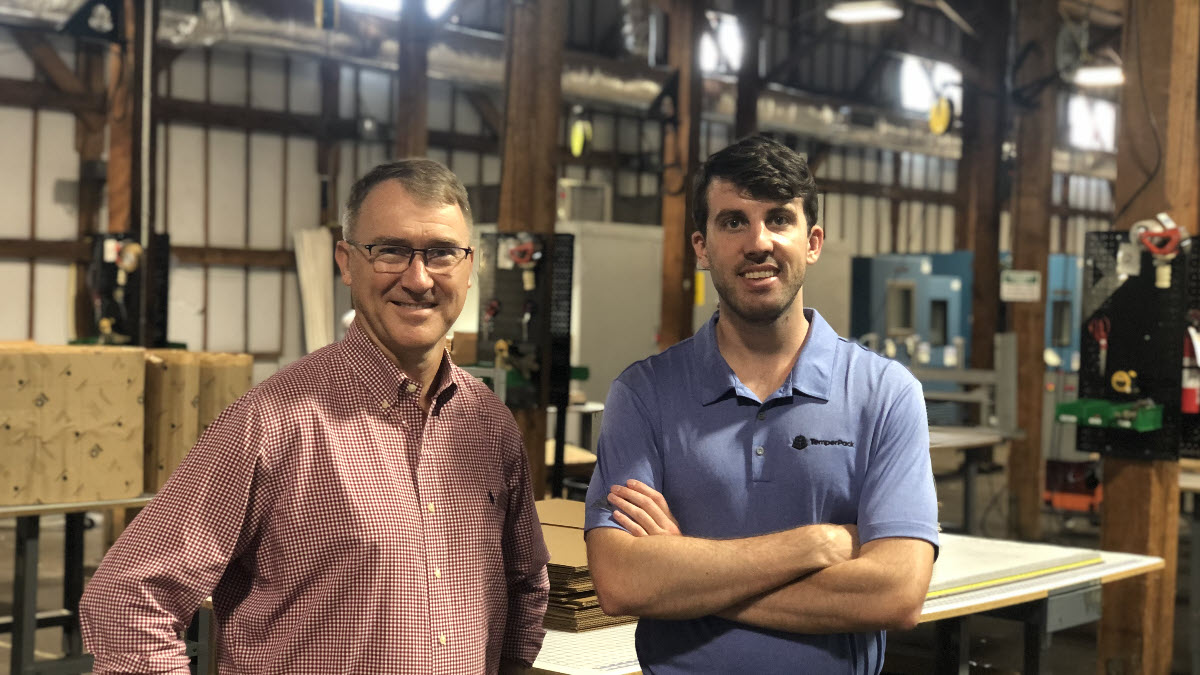Stories
Helping reduce the impacts of climate change through investments

As we celebrate World Environment Day on June 5, here’s a look at three U.S. Bancorp Community Development Corporation projects advancing sustainability.
Last year U.S. Bank announced several company-wide commitments to address the impacts of climate change on its business, customers and communities, including setting a goal to achieve Net Zero greenhouse gas (GHG) emissions by 2050. And U.S Bancorp Community Development Corporation (USBCDC), the community investment and tax credit subsidiary of U.S. Bank, has financed $14 billion in solar since 2008.
As we celebrate World Environment Day on June 5, here’s a look at three USBCDC projects advancing sustainability through investments in affordable housing, economic development, and renewable energy.
In recent years, and especially during the pandemic, there’s been an enormous increase of in-home deliveries of perishable food and medications. As these preferences continue to grow, so does the waste.
Founded in 2015, TemperPack designed a thermal-sustainable packaging called ClimaCell to address the waste that’s caused by packaging – boxes, thermal insulated liners, shipping sleeves, as well as courier-based delivery bags.
In 2020 and 2021, USBCDC made several investments in TemperPack to finance the purchase and installation of manufacturing equipment and raw materials at its two facilities in Virginia and Nevada, which generated more than $23 million in New Markets Tax Credits.
The investment is in response to a greater demand from consumers to reduce their environmental footprint. The United States Environmental Protection Agency estimates that plastic and other packaging waste amounts to almost 30% of all U.S. municipal solid waste annually – meaning that this waste is ending up in either the landfill or incinerated.
By choosing ClimaCell instead of expanded polystyrene foam (EPS, Styrofoam), their customers replaced 122 Olympic swimming pools worth of unrecyclable plastic with material that could be easily recycled in the last year alone, said Jed Dutton, vice president of marketing at TemperPack.
“TemperPack’s mission to replace plastic with sustainable materials helps to reduce the energy required to produce and transport those materials; therefore, providing a better solution for its customers and the earth,” said Stacie K. Chang, vice president and senior project manager of New Markets and Historic Tax Credit investments at USBCDC.
Ashland Park Apartments
Being stewards of our environment takes many forms – even renovating existing apartment buildings to make them energy efficient.
USBCDC has worked on two projects with The Paces Foundation, a nonprofit developer that provides affordable housing and services for low-income seniors and families. Its mission is to ensure that the buildings are constructed to meet green certification standards to ease utility and maintenance costs for residents and have a low impact on the environment.
In 2021, USBCDC invested $20.7 million in Low Income Housing Tax Credits and provided $19.56 million in lending for The Paces Foundation’s rehab of Ashland Park, a complex that includes eight buildings with 184 affordable housing units in Rome, Georgia.
The investment will not only preserve the property’s long-term affordability, but also helps meet its green LEED certification by updating all unit finishes and appliances.
Ashland Park – located in a neighborhood where most of residents are people of color – is managed and co-sponsored by Northwest Georgia Housing Authority, a Black-led organization.
USBCDC’s investment in the project also supports U.S. Bank Access Commitment, the company’s long-term approach to help build wealth while redefining how the bank serves racially diverse communities and provides more opportunities for employees of color.
“Building construction has a huge impact on resource consumption,” said Patrick S. Finerty, vice president of Affordable Housing at USBCDC. “And that’s why it’s important for us to partner with customers like The Paces Foundation and Northwest Georgia Housing Authority – not only are they committed to communities of color, but they also follow best practices in sustainability, and engage residents and their staff in the green aspects of their developments.”
Residential solar and battery storage systems
All across the country, more and more homeowners are transitioning to solar – but nowhere is it more needed than in Puerto Rico, where following Hurricane Maria some residents were without power for nearly a year.
It’s why USBCDC, in partnership with renewable energy developer Sunrun, has made a nearly $300 million investment in a residential solar fund, which will bring rooftop panels to 20,500 single family homes, military housing, and affordable housing developments in Puerto Rico plus 23 states and the District of Columbia. Up to 2,000 homes in Puerto Rico will be outfitted with solar panels and battery storage systems through this investment.
The combination of solar panels and battery systems can be a long-term solution in areas like Puerto Rico, where residents experience frequent and prolonged blackouts and brownouts.
“Giving communities access to the resources they need to decrease their reliance on fossil fuels is an important component of our corporate responsibility,” said Adam Altenhofen, senior vice president of Environmental Finance at USBCDC. “These systems not only help to give homeowners independence from the grid, but also will help to keep their lights on.”
Media center
Press contact information, latest news and more
Learn more
Company facts, history, leadership and more
Work for U.S. Bank
Explore job opportunities based on your skills and location
